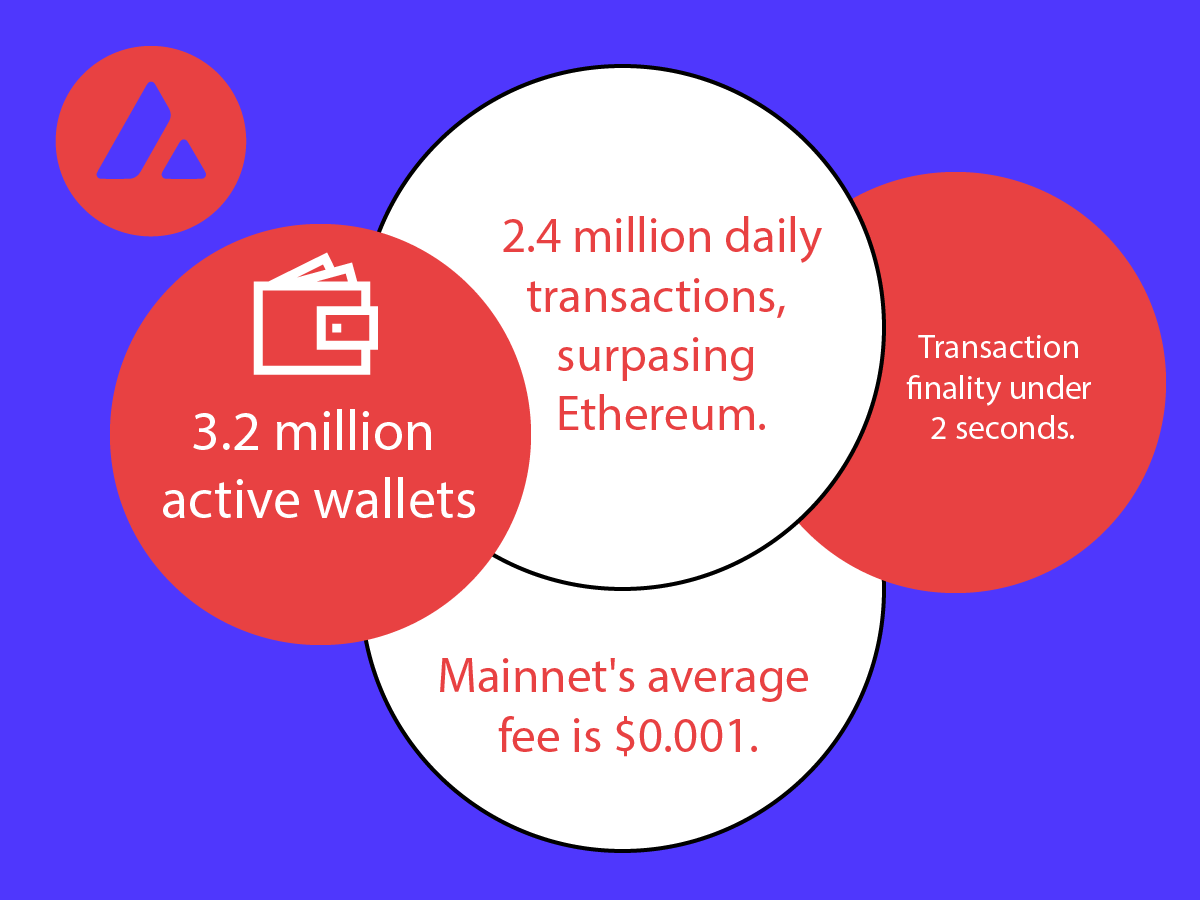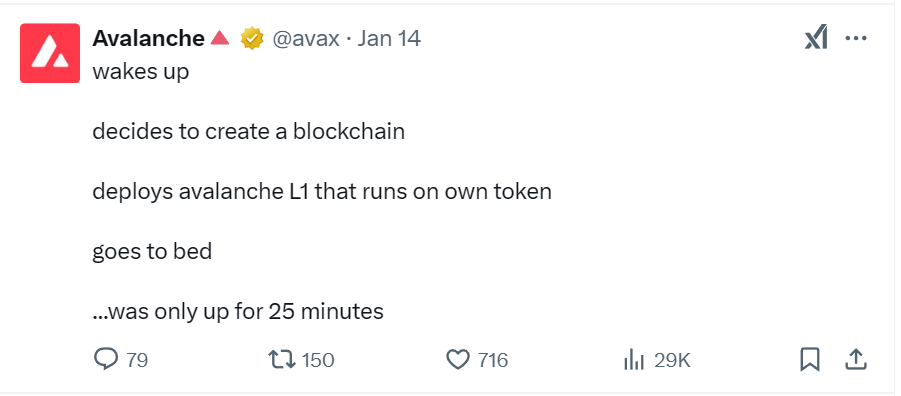Avalanche9000: What It Is, and How It Works



Avalanche9000, also known as the Etna Upgrade, builds on previous updates like Avalanche360, which introduced core enhancements for speed and scalability. This upgrade removes the previous 2,000 AVAX staking requirement (approximately $66,000 in January 2025) for validators, reducing the cost to launch a subnet to as little as $50.
Another important feature is allowing developers to select tokens other than AVAX to function as native gas tokens. With the ability to determine its own staking rules and rewards, Avalanche is challenging the position currently held by Polkadot's parachains. By the way, Polkadot also introduced its own major update, which we already covered here.
Avalanche9000 was released on December 16, 2024. In general, it would be fitting to say that it focuses on increasing scalability and expanding developer functionalities.
[.c-wr-center][.button-black]Get Started[.button-black][.c-wr-center]
Avalanche has been positioned among bigger blockchains for some time, which, while not growing rapidly, have enjoyed a long-term place under the sun. As of December 2024, the total locked value (or TVL) in Avalanche smart contracts was around $1.6 billion. This ranks it as the tenth-largest blockchain. The native cryptocurrency, AVAX, occupies 11th place by market capitalization.
The ecosystem packs nearly 150 subnets, those being a dynamic set of validators that work together to achieve consensus on one or more blockchains. Forty-two of them are highly active, spamming across various sectors such as finance, gaming, and supply chain.
Here are some key statistics highlighting its current standing, updated as of January 2025:

[.c-box-wrapper][.c-box][.c-text-center]You might be interested in: EIP-7781: New Effort to Increase Ethereum’s Throughput[.c-text-center][.c-box][.c-box-wrapper]
Let’s look a bit deeper into what Avalanche9000 delivers for both developers and users.
The network has been made more accessible for smaller projects and hobbyist developers. The update reduces the cost of deploying a Layer 1 blockchain by 99.9%. Creating your own network—subnet—complete with staking, gas fees, and other components can now be achieved for as little as $50.
There are predictions floating around in the community pointing to an exponential increase in subnets in 2025.
A new native protocol for communication across Avalanche subnets and even external blockchains has been introduced. ICM, unlike traditional bridge mechanisms, leverages Avalanche's subnet-to-subnet consensus, leading to low-latency message delivery and eliminating reliance on external validators. As we explored in our Web3 Security article (give it a read) bridges are often the weakest link in the ecosystem, leading to massive hacks and billions in losses.
[.c-box-wrapper][.c-box][.c-text-center]You might be interested in: Web3 Dapp Hosting: Components, Preferences, and Best Practices[.c-text-center][.c-box][.c-box-wrapper]
Some ICM features:
Let's explore a scenario, an example of a potential use case: A developer who wants to deploy an NFT marketplace on a subnet would use ICM to enable asset transfers to Ethereum without relying on third-party bridges. The result is a much safer environment for both the developer and users. Using ICM is also cheaper. Avalanche badly needed this feature, as what sets it apart from Cosmos or Polkadot is that subnets are their own external blockchains.
ICM also pairs well with permissionless validation introduced in Avalanche9000. Layer 1 blockchains can now operate independently of Avalanche’s core chains.
To summarize this great new feature, developers now can…
[.c-box-wrapper][.c-box][.c-text-center]You might be interested in: What Is a Blockchain Ledger and How Does It Work?[.c-text-center][.c-box][.c-box-wrapper]
With Avalanche9000, the rewards you get for staking increase by 15% compared to 2024. Blockchain networks such as Avalanche are secured thanks to validators who stake their coins to discourage them from engaging in malicious activities. To make a long argument short, more rewards mean more stakers and greater security.
Avalanche9000 packs new tools and features that will make developers' lives easier.
So far, early access participants of Avalanche9000 report a 20% reduction in development time due to these tooling improvements. Developers gain access to improved SDKs, APIs, and debugging tools. Avalanche on Twitter even claims that your own blockchain can be launched in mere minutes. The new developer console now integrates advanced analytics and real-time network insights, making the debugging and optimization process a breeze.

Avalanche9000 is projected to accelerate adoption and bring measurable growth to the whole Avalanche ecosystem.
We collected some data-driven projections from websites such as The Block to give you an idea of the impact: Avalanche is now well-positioned to experience exponential growth in 2025 and beyond. The upgrade came right after Avalanche secured $250 million for its development. The foundation predicts a year-over-year growth of decentralized applications by 40%. Subnet deployments are already surging as the community tests the new features.
Avalanche has been integrated into institutional-grade platforms like BlackRock's USD Institutional Digital Liquidity Fund (source) and Franklin Templeton’s OnChain US Government Money Market Fund (source).
Here’s why:
[.c-box-wrapper][.c-box][.c-text-center]You might be interested in: Smart Contracts: The Backbone of Decentralized Applications[.c-text-center][.c-box][.c-box-wrapper]
Avalanche has solid performance, flexibility, and affordability. It has also been on the market for a long time. The new upgrade addresses many known issues and is tailor-made specifically to make the deployment of subchains or smart contracts easier. These are the positive aspects of the platform. Nevertheless, there are some negatives as well, for example, the broader crypto community is not yet accustomed to utilizing Avalanche's DeFi protocols, and the number of active users is below that of other blockchains such as Ethereum, Solana, and others.
One important aspect of every blockchain for ordinary devs is community support. Avalanche’s developer community is supported by initiatives such as regular hackathons, weekly AMA sessions, and a dedicated forum for troubleshooting. Avalanche’s developer community facilitates many active support channels.
But there is one last important thing to note: The Avalanche Foundation has been offering a lot of developer grants, including the Retro9000 program launched after the successful upgrade. Retro9000 offers up to $40 million in retroactive grants. These are also used to incentivize developers to create essential tools for the community.
[.c-wr-center][.button-black]Develop Now[.button-black][.c-wr-center]
Build blockchain apps faster with a unified framework for 60+ blockchain protocols.